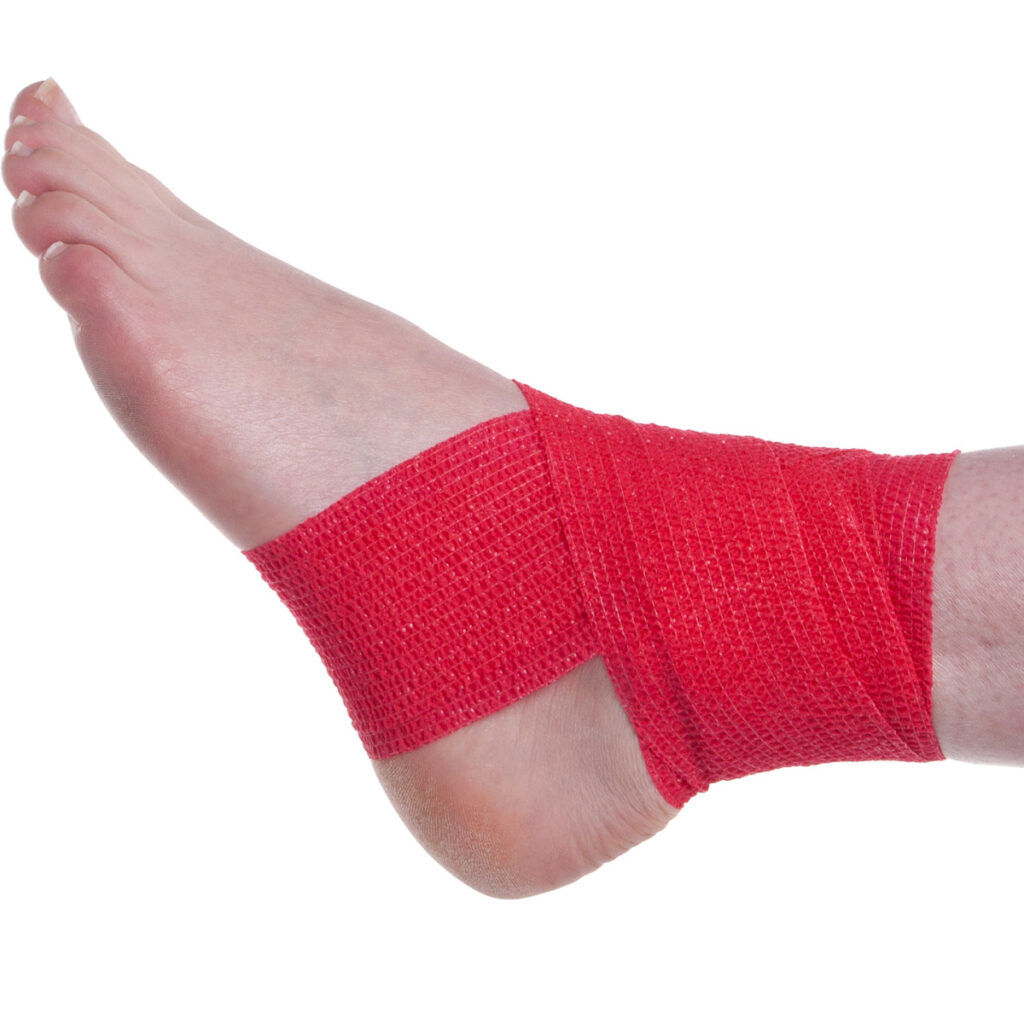Cohesive bandage is one of the most useful strapping tapes for sport. It is widely used in other countries, but is less well-known here in the UK where adhesive tapes like EAB or zinc oxide tape are more popular. This is a shame, because cohesive bandage is actually the best choice for many touchline tape jobs. Here are six reasons why you should include cohesive bandage in your taping armoury…

1. Cohesive bandage does not stick to the skin
This might sound counter-intuitive; why would you want a strapping tape that doesn’t stick? Here’s the good part: cohesive bandage does not stick to the skin but it DOES stick to itself. When you wrap cohesive bandage over itself, it firmly coheres together (hence the name.) This makes it handy for any tape job that involves wrapping tape around a limb – i.e. most of the tape jobs you will ever need to perform on the touchline or in the changing room. And because it contains no adhesive, it will not inflict any damage to the skin or hair. One of our Rugby club customers who always buys cohesive bandage instead of adhesive tape puts it like this: ‘The lads don’t like to be waxed.’
2. It is very stretchy
Cohesive bandage stretches a lot – up to double its unstretched length. This allows you great flexibility to choose a level of compression to fit the situation. For instance, you could wrap it on with almost no stretch to give light support to a finger bend injury, or stretch it very tightly to provide heavy compression to a severely bleeding wound.
3. It offers variable levels of support
Cohesive bandage offers a range of support levels for weak or injured joints – from light to quite firm – depending on how many layers of tape you wrap on. For instance, when wrapping a sprained ankle, you would avoid applying the cohesive bandage with too much stretch because this would create constriction and cause swelling in the foot. However, you can acheive high levels of support without over-constriction just by adding more layers. One or two layers of cohesive bandage, applied without stretch, will provide quite light support. As you wrap over extra layers, the level of support quickly ‘firms up,’ especially if you press the layers together.
4. It does not ‘give’
With some other kinds of strapping tape, you often have to apply them more tightly than you want them to be to compensate for the fact they stretch out and loosen off a little during wear. Cohesive bandage, on the other hand, does not have this level of give. It stays exactly as you placed it until it is pulled off or unwrapped.
5. You can tear it by hand
Cohesive Bandage can easily be torn along its length and width. Because you don’t have to rumage around for your scissors, you can use it very quickly. Simply tear the tape from one edge in the same way you would tear a piece of paper.
6. It can be reapplied and reused
Because cohesive bandage doesn’t rely on adhesive for its sticking properties, it does not lose its stick. So if you don’t get the tape job right the first time you can just unpeel it and try again. This property also means that you can repeatedly reuse the same piece of cohesive bandage. (Although if you’ve used it to wrap a sweaty foot you might not want to…)
Where can I buy cohesive bandage?
Most medical and first aid supplies companies now sell one or more brands of cohesive bandage. You can view our range – which includes some latex-free varieties – by clicking here. Some sports equipment and sports therapy companies also sell cohesive bandage under various other names such as Rip Tape, Multi Wrap or Goalkeeper Tape. These products are usually much more expensive than standard cohesive bandage, but there is actually no difference apart from the name and the price.


